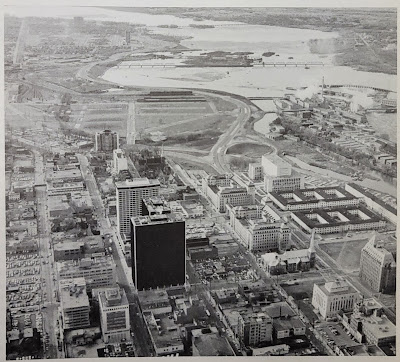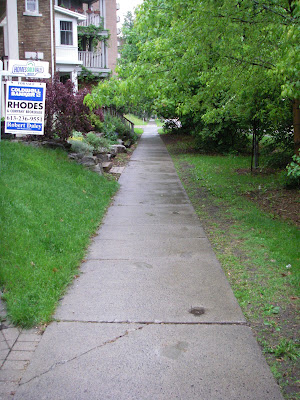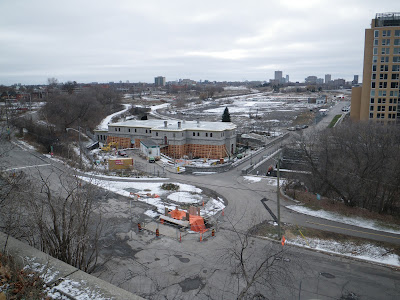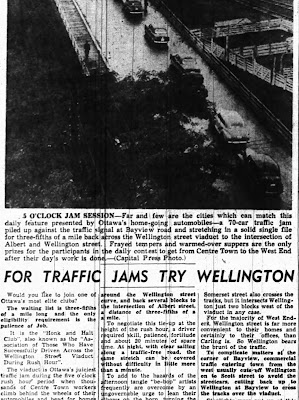Part 12: 50 Years of Rapid Transit in Ottawa
I wanted to pick up the narrative of Wellington Street to line up with an important milestone in Ottawa transit history: the 50th anniversary of bus lanes in Ottawa. It doesn't involve much in the way of the theme of this blog series—the connections, disconnections, and renamings of Wellington Street—but there is a dash of that. Alas, I missed the 50th anniversary for this blog post (by over a year!) but I did get a September 2023 article on the topic published in the Centretown BUZZ newspaper.In the previous post in the series, we left off with the 1974 opening of the Portage Bridge, connecting the west end of Wellington Street, at the Ottawa River Parkway, to Hull, and severing Wellington Street from itself in LeBreton Flats. Today, we'll rewind a couple of years to look at how rapid transit in Ottawa began to reshape traffic patterns on the various Wellington Streets, such as here on the Ottawa River Parkway:1




![A paper letter starting Hi Eccles St Neighbours, Our neighbourhood is now using a free app called Nextdoor Dalhousie and you should join us. There's a code that it says will expire in 7 days, and it's signed Your neighbour, [name and street name removed by me]](https://blogger.googleusercontent.com/img/a/AVvXsEg5rokjBpaCuPrF1NFwmQawJQKo4YGGRWN8G8MranVAFgfnWekrTxYvrRDWuh-aE1_G-3SCC6MdhG43RCeBv7bAGeSG6yulDZq0pbHf2ltZyBOo_y3s2rZehygPoKoGVzmHd5n5rra7KcAT77yJbdEOig44DVYg9X_UW_zrJ9pAxsxpohnwcNR5XZ3q=s400)


